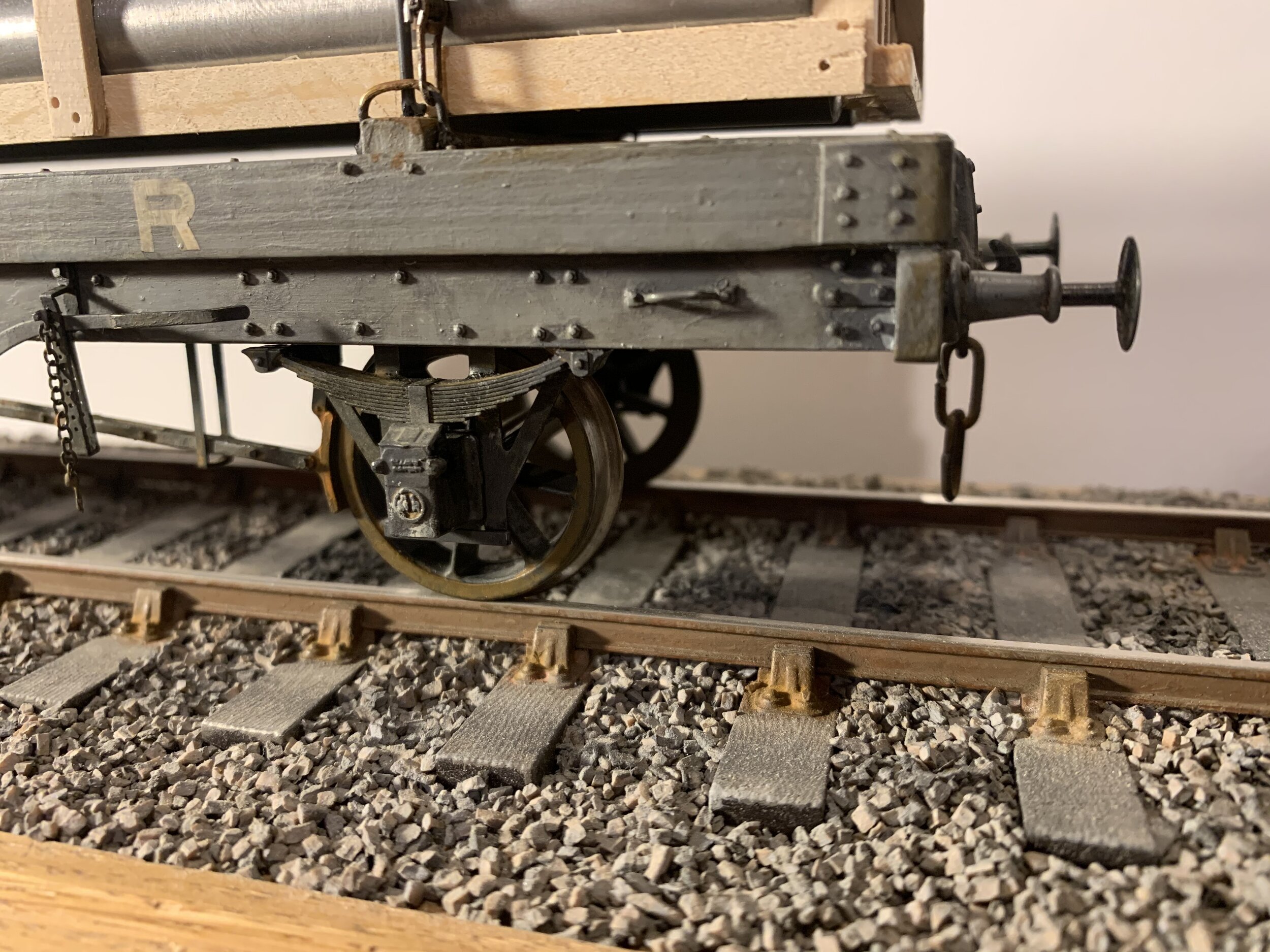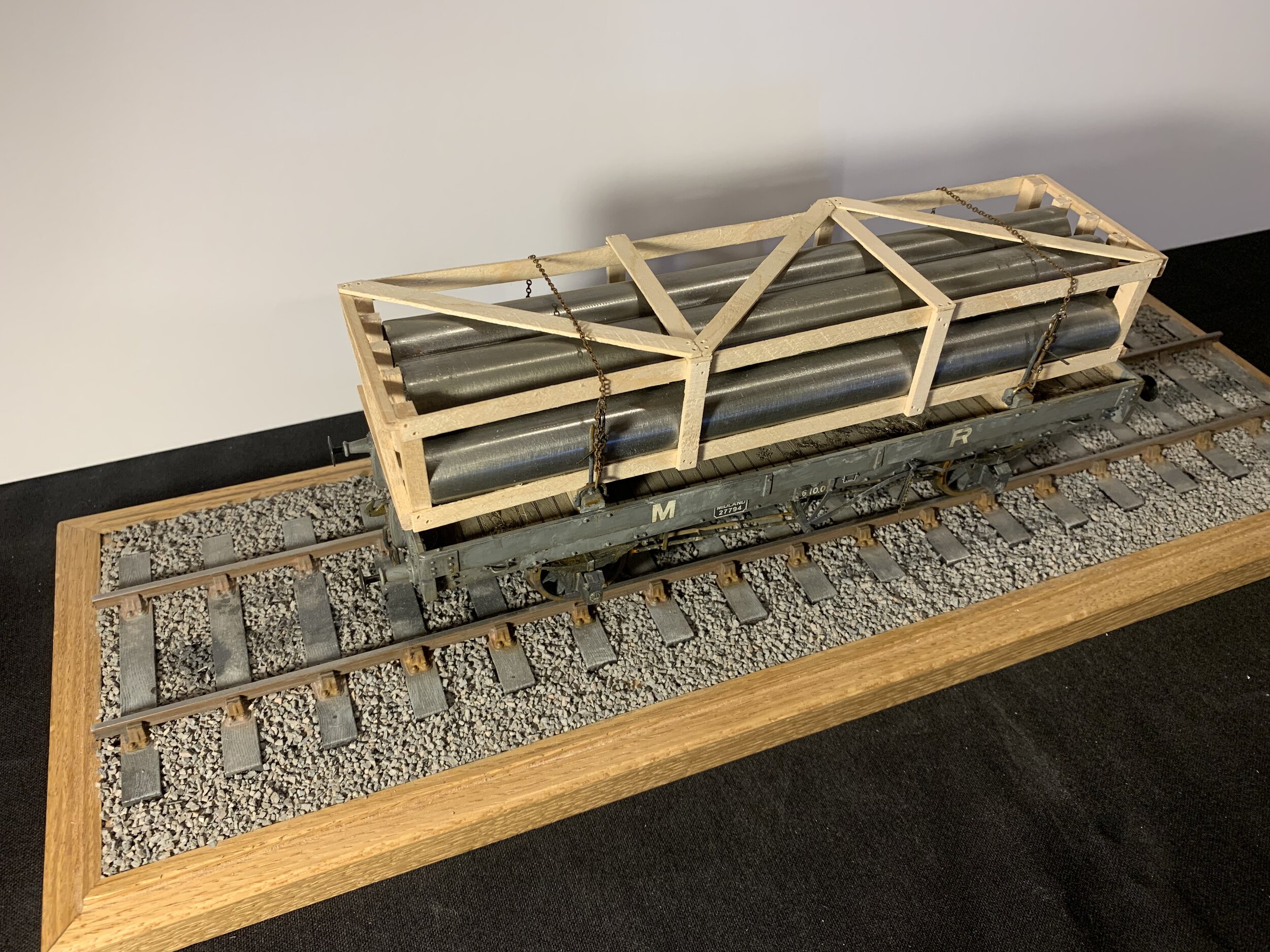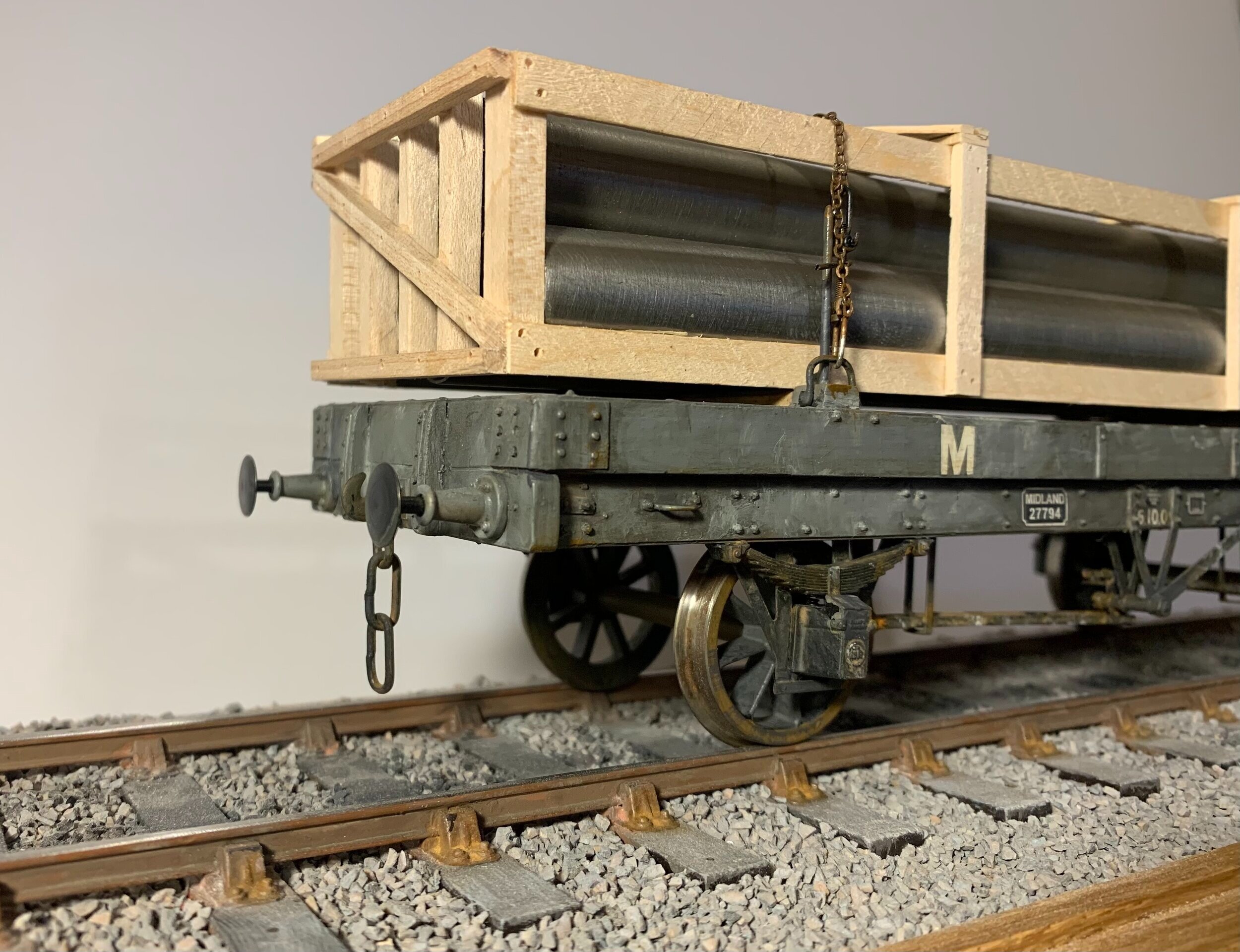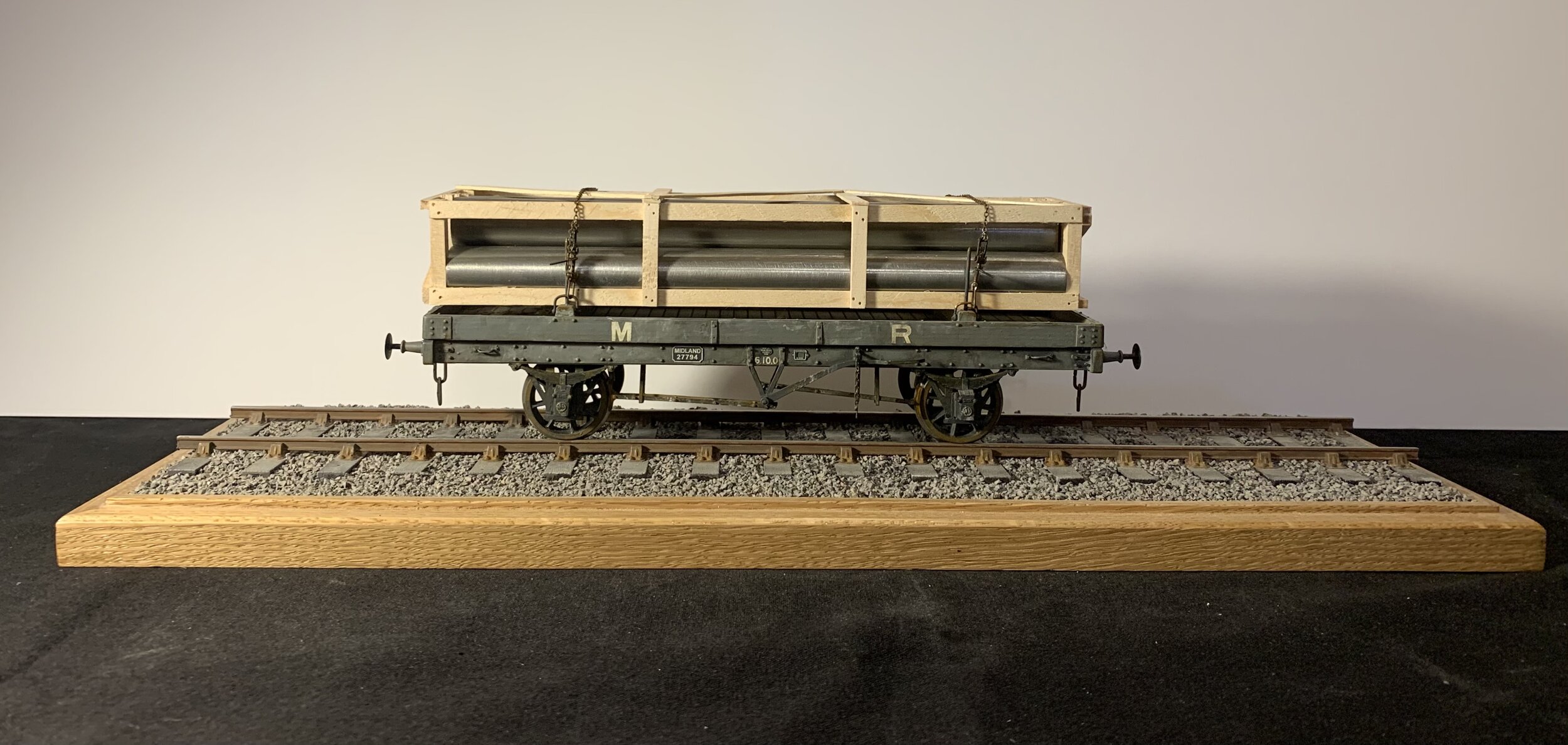I have long held a desire to make large scale display railway models. I have been inspired on numerous occasions by such models displayed in museums, especially the Science Museum and the National Railway Museum. So I thought I’d take the plunge. I have started with something simple, a Midland Railway double bolster wagon, complete with a load of steel pipes. The basis of the model is sections of maple machined by me to the correct sizes to represent the buffer beams, solebars, plank sides and bolsters. The floor is a piece of ply with laser engraved planks. The wheels, axleboxed, w-irons, buffers and couplings came from Slater’s. The bolt details are from the excellent range by Historex. A bit of trial and error was needed to get the right sizes but they are extremely effective. I also have Phil Pearce of Intentio to thank for the laser engraved number plate, builder’s plate (with legible build date!) and ticket holder. My laser doesn’t quite have the definition to make these unfortunately. The load of steel pipes are curtain poles from Ikea that I happened to have lying around!
I have plans for a second wagon build so watch this space.
If you would like to commission me to build you your favourite wagin to this marvelous scale then contact me to discuss. This model is made to true 1:32, or 9.5mm/ft, as that is the scale the Slater’s parts are produced to.
















































































